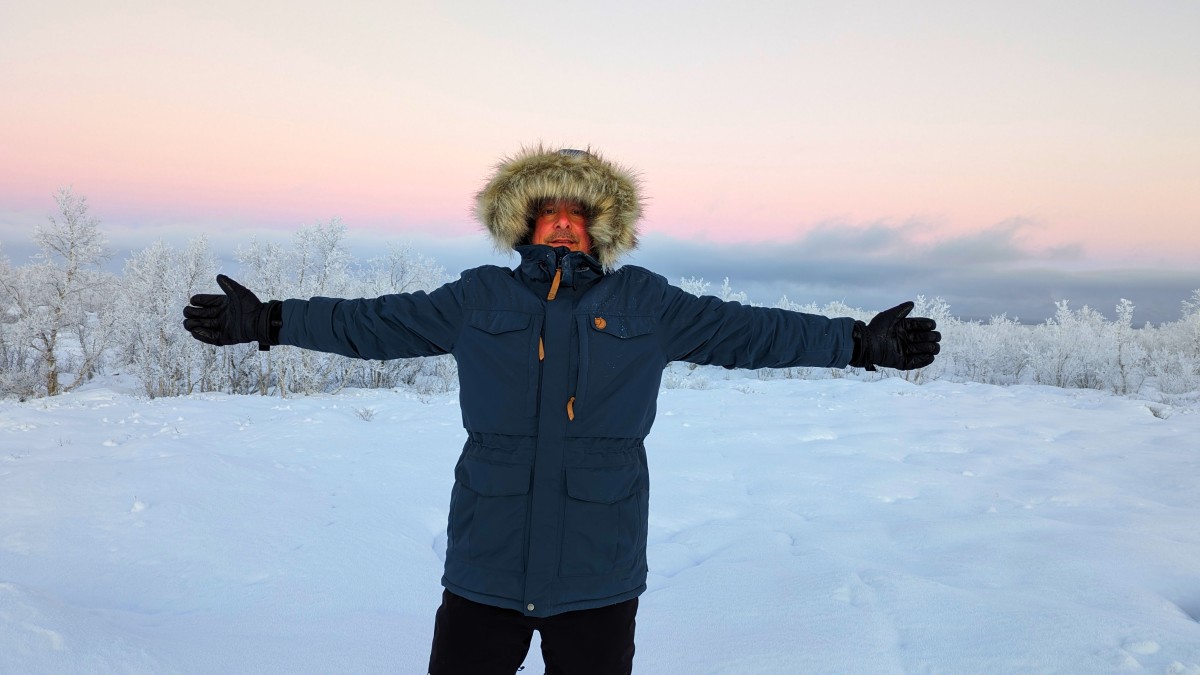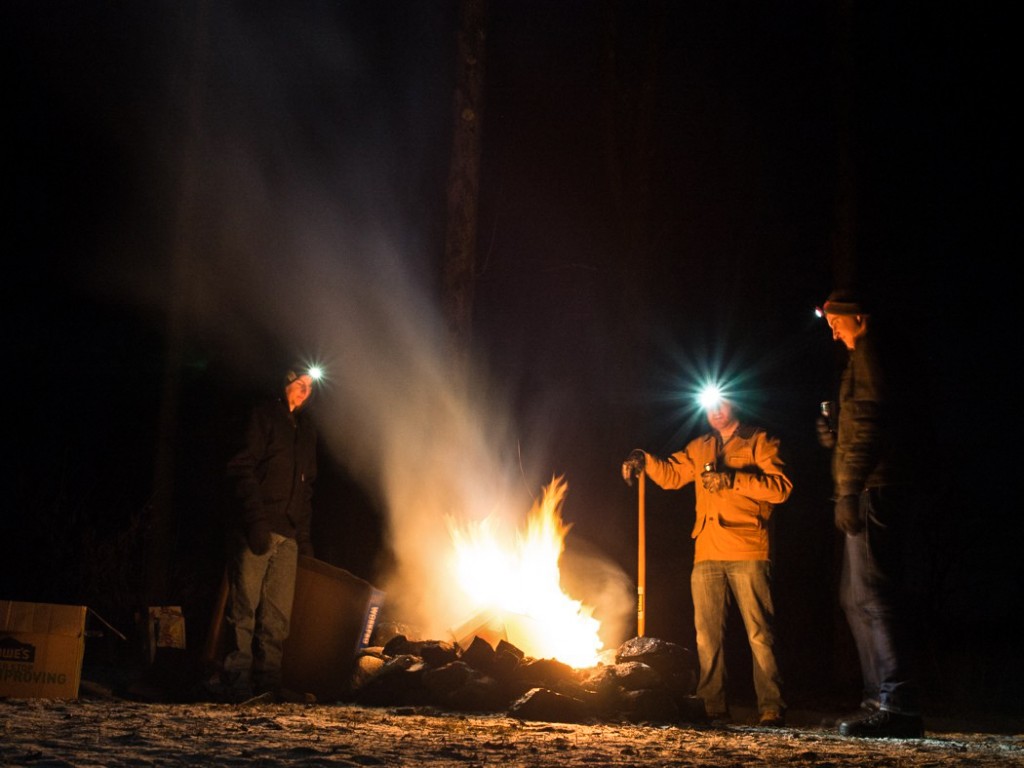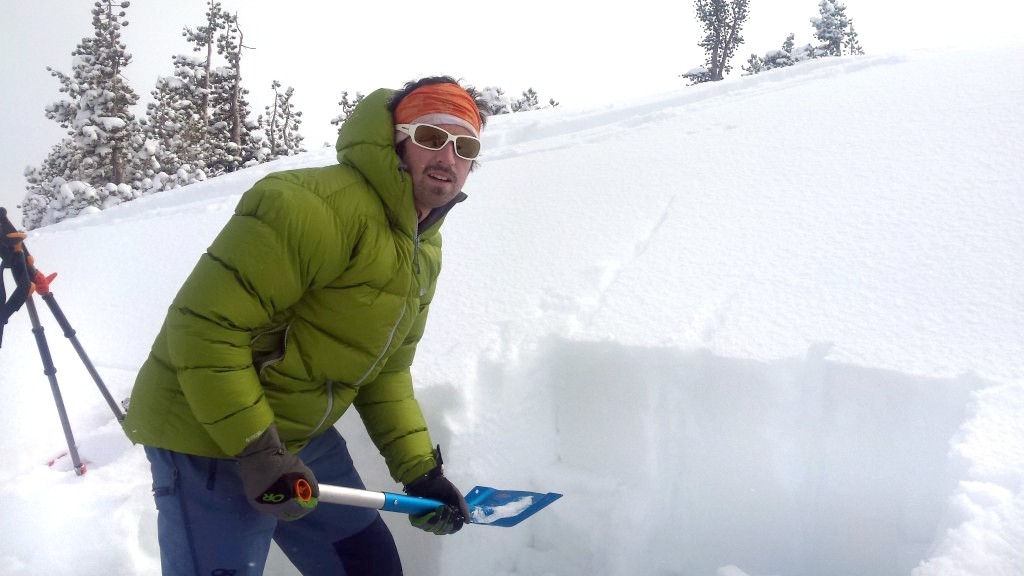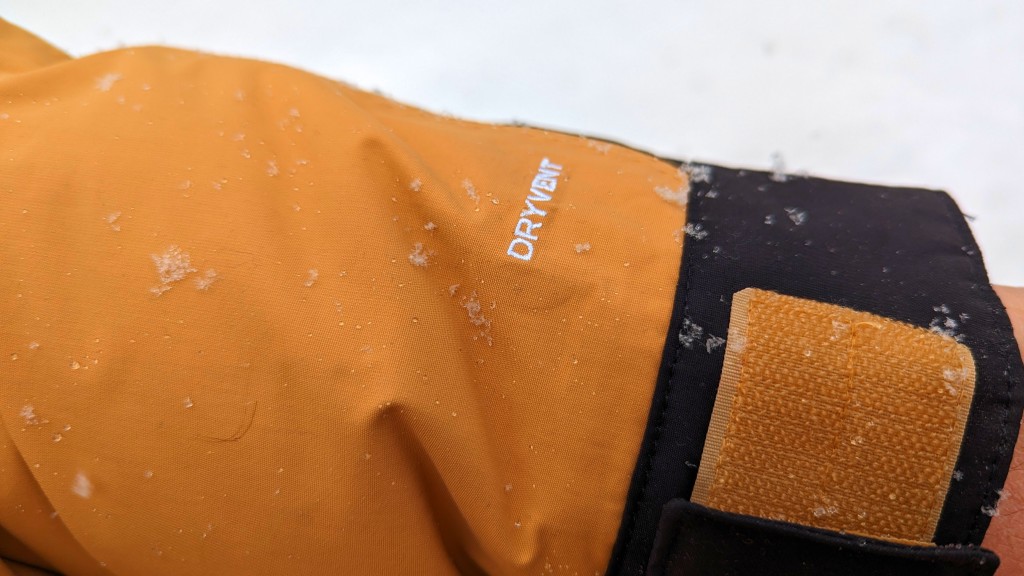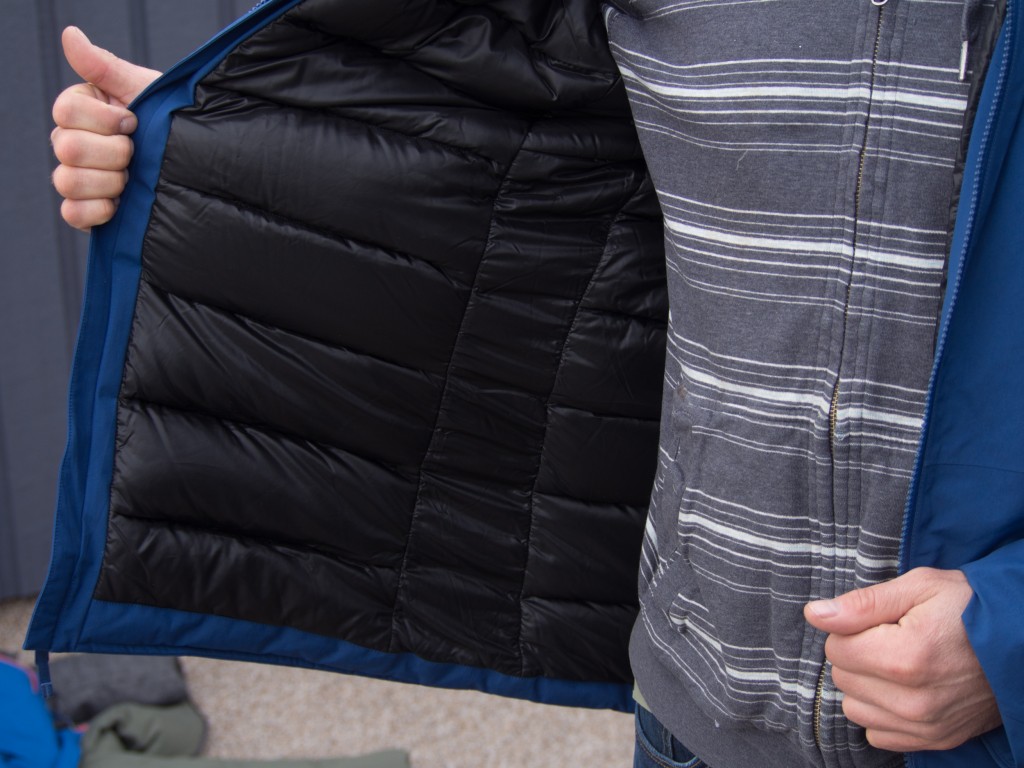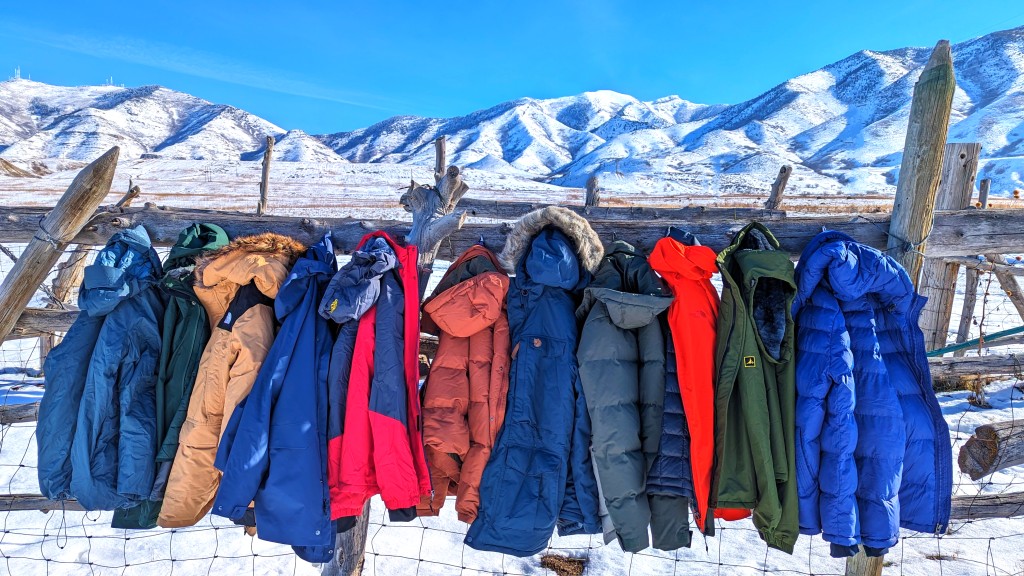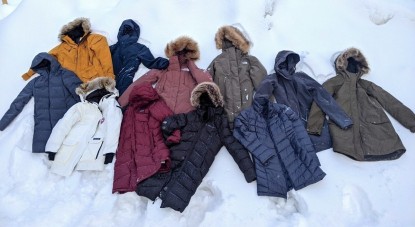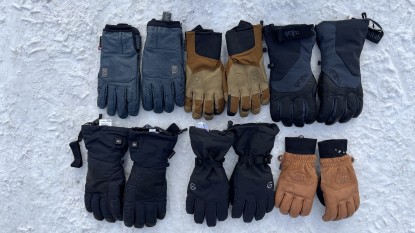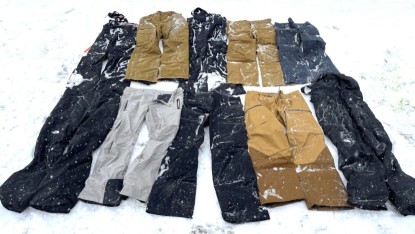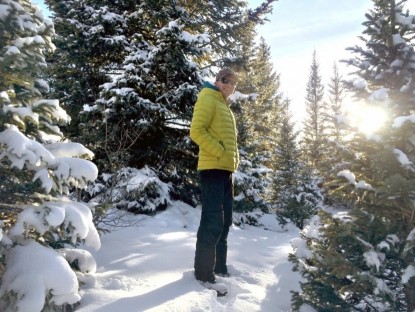What are Winter Jackets?
Our favorite men's winter jackets are garments built to withstand cold, windy, and wet weather. They contain thick insulation, so your body stays warm even when standing still. They are also constructed with fabrics that repel water and wind, creating weatherproof refuges for your upper body.
It is this combination of weather resistance and warmth that sets the jackets in this test apart from other jacket styles such as down jackets and synthetic insulation jackets. Those thinner and less protective pieces are often part of an integrated system of layers to give the user ultimate discretion in warmth and sweat management during winter activities. The jackets featured in this review are intended to be used as an all-in-one overcoat, with few or no warm layers needed underneath.
In addition to keeping you warm and dry, winter jackets are styled for more casual and sometimes formal occasions. In contrast to their lightweight counterparts used for cold-weather sports, all-around winter jackets often include more features that add comfort and livability since weight is not a primary concern. They need to make life in winter more bearable, with plenty of room for storing your favorite winter gloves, hats, scarves, and accessories.
Types of Winter Jackets
There are several variations on the winter coat on the market, from stylish insulated trenches to technical puffy jackets meant for outdoor adventures. We bought and tested a wide range of styles for our review. Below, we'll break down the different types and present some key choices to consider.
Technical Jackets
What makes a winter jacket technical isn't just a dayglow color that fits right in at Everest Base Camp. Technical garments are designed to keep the user warm, dry, or both at a minimal weight. They often keep features to a minimum to save weight and streamline athletic performance. Often, technical jackets have a slim fit to enable athletic movement and trim any unnecessary bulk. Common features include interior water bottle pockets, helmet-compatible hoods, climbing harness-compatible zippers or length, and more durable materials placed in high-wear areas. They usually put a premium on the warmth-to-weight ratio.
Can you wear a technical jacket in a casual setting? Sure. Most manufacturers even offer these garments in more subdued colors, so you don't have to look like a tennis ball if you don't want to. Note, however, that these models typically come with a high price tag since you are paying extra for lower weight, high fill-power down, which won't make a difference in performance if it's only worn on city streets. However, some users who live in more extreme climates may actually need the performance of a technical winter jacket for everyday winter life.
Casual Jackets
In contrast with technical jackets, casual models put a premium on style and comfort in addition to accomplishing their primary tasks of providing warmth and weather resistance. They are also usually built with heavy-duty shell materials like canvas or nylon, which add weight but are much more durable than the razor-thin and delicate shell fabrics used in technical jackets. They might also include stylistic features like cargo pockets, button flaps over the front zipper, and fur accents around the neck and hood.
Since these jackets are made with affordability, durability, and comfort in mind, they don't always offer an athletic fit or lightweight, making them less suitable for high-output activities. However, they work great for getting around the city and for activities like sledding, sightseeing, or a bonfire with friends. Casual jackets also offer convenient features such as phone pockets, removable hoods, and thigh-length fits that provide extra protection.
We don't recommend wearing a casual parka in a technical setting. While you can get by with a relaxed model on the ski hill, since the lodge is usually close by, longer winter excursions demand specific gear for safety and performance reasons. An ultra-warm model will keep you toasty, but it may be hard to move your arms properly due to a potentially bulky design. A bulkier parka would not be the best choice to bring on a mountaineering trip.
Elements of a Quality Winter Jacket
Most winter jackets are comprised of an insulating layer that provides warmth and an outer shell that keeps the weather out. They also have useful elements that make winter living easier. Here, we break down each component and note what to look for.
Outer Shell
A shell is a thin outer layer of fabric that provides weather-resistant performance. They vary from super-waterproof, impermeable rubber layers to very breathable, minimally water-resistant softshell fabrics. They can offer superior protection from rain, sleet, and snow using a weatherproof barrier material such as Gore-Tex, eVent, DryVent, or H2NO.
In general, shell layers provide no insulation value. Most winter jackets feature a shell layer on top of an insulating layer. Using a rain shell as a winter coat means you need to know how to layer underneath it to keep yourself warm. Please read our Introduction to Layered Clothing Systems article for more information.
For most high-output winter activities, like hiking, snowshoeing, fat biking, cross-country skiing, and backcountry skiing, an uninsulated shell is best. It allows the user to choose which additional layers to wear underneath and custom-tailor the amount of warmth the clothing system provides. But in most low-output activities, like urban living, campus life, and commuting, an all-purpose jacket with a shell and plenty of insulation is perfect. If you are in the market for a new uninsulated shell, check out our picks for the best hardshell jackets.
Many of the models we tested for this review have a proprietary waterproof membrane, like Gore-Tex, as well as a DWR (durable water repellent) coating on their shells. However, some use a polyurethane membrane that is laminated to the back of the shell fabric. Polyurethane is often just as waterproof as Gore-tex membranes, but not as breathable.
Insulation
The three main types of jacket insulation are down feathers, synthetic fibers, and synthetic fleece—all three work by trapping air in a confined space, which heats up from your body heat. In general, down and synthetic insulation capture more body heat than fleece insulation and thus is more widely used when lots of insulation is needed, which is typically the case with winter coats.
DownDown, made from bird feathers, has been used for insulation since ancient times and is still the gold standard for most warm apparel. With proper maintenance and care, down can keep its original loft volume for many years. Another benefit of down is its ability to compress to a fraction of its lofted size, then puff right back up again when unpacked. Down also provides the best warmth-to-weight ratio of any insulation material, making it the best choice for most technical jackets. Down's main drawback is its poor performance in wet conditions. Feathers ball and clump when wet, leaving no room for warm air in between. Birds keep their feathers oiled to repel water, but down jackets rely on a waterproof and breathable shell to prevent them from getting wet. They also typically require a mechanical clothes dryer to restore the loft after fully soaking the jacket.
Some manufacturers even treat feathers individually with a water-repellent chemical, which can help, but it is not 100% effective in our experience. Even the most protected down is still susceptible to getting wet, so a winter jacket with synthetic insulation is a better choice if you live in a rainy winter climate where temperatures hover just above freezing.
Because these loose feathers will be pulled down with gravity over time and ultimately fall to the hem of the jacket if left alone, down insulation is packed into small compartments called baffles. Baffles are separated by stitching, where the fabrics on either side of the down insulation compartment are joined. At the seam, there are no feathers between the inside of the jacket and the outer shell layer, which has no insulation value. This design creates cold spots in the coat. Manufacturers have discovered a way to prevent this with "box" baffling, which features three-dimensional baffles separated by a "floor" and "walls," eliminating any areas that lack insulation between the user and the outer shell. This technology is usually only included in the most expensive and technical down jackets.
Down Fill Power and Warmth
You will see references to each jacket's fill power throughout our reviews. This specification is also noted in our comparison table, allowing you to compare the fill powers of all the parkas side-by-side. Fill power is an indicator of down quality. The number you see is the number of cubic inches that one ounce of down occupies when placed in a graduated cylinder and compressed by a standardized weight. Simply put, a higher fill power down is more naturally puffy and, therefore, warmer relative to a lower fill power down. Six ounces of 850-fill down is warmer and more compressible than six ounces of 600-fill down.
Many factors collectively affect a parka's warmth; fill power is only part of the story. Down-fill weight is also critically important. The fill weight measures how much down insulation is used in the parka. Thus, a jacket with eight ounces of 650-fill down is warmer than a jacket with two ounces of 800-fill, even though it uses lower-quality down. These two numbers, the fill power and fill weight together, can give you a reasonable idea of how warm a particular product is. Refer to our Down Jacket Buying Advice article for more information on down jacket construction.
SyntheticSynthetic insulation is made of plastic fibers that are spun to mimic the puffy structure of down. Companies like PrimaLoft and Polarguard have made great leaps in synthetic material quality in recent years. The advantage of synthetic insulation is that it does not clump up when wet. Although the warming properties of synthetic insulation are also compromised by moisture, the effect is not as severe as it is with down, and synthetic insulation will dry out faster.
The drawback to synthetic insulation is that it weighs more; however, it does not settle with gravity, meaning that baffles are not needed to keep the insulation in place. As a result, fewer stitches are required through the insulation compartment, meaning fewer cold spots than most down jackets. But even with more continuous insulation, synthetic is typically not as warm as down.
Pile FabricPile or fleece is a fabric meant to replicate the hide and wool of sheep. It is a woven fabric with a fuzzy, thick layer of fibers that looks quite like a sheep's wool. Pile combines the inexpensive nature and water-readiness of synthetic insulation with the durability of down insulation. The main disadvantage of pile insulation is that it's not that thick, so it's not that warm. Over the years, we have tested thick pile jackets and thinner fleece-insulated jackets. All of these are among the least insulating winter jackets around. On the upside, contenders like this are low-maintenance and will last a long time.
Hybrid Insulation
Hybrid pieces maximize performance by matching the benefits of an insulation type to your body's needs. Almost half of the jackets now feature some hybrid insulation in our review. The pile-insulated jackets, for instance, feature synthetic puff-insulated sleeves to keep your arms warm.
Many hybrid jackets feature strategically mapped down and synthetic insulation to the user's body and perspiration hot spots. The hybrid nature of these jackets doesn't seem to change their performance much. If we split hairs, we could probably find subtle differences. However, we didn't see any differentiating pros or cons to hybrid designs
Fit and Comfort
Quality winter jackets pack lots of insulation underneath a weatherproof shell, yet don't restrict motion or feel uncomfortable. It is a tall order, but the best winter jacket manufacturers achieve this balance by carefully tailoring the cut to allow freedom of movement. Jackets often feel constricting in the torso, shoulders, or neck. The best jackets offer a close fit that doesn't restrict movement. Of course, everyone has a different body type, so pay close attention to our hands-on reviews where we mention the cut of certain jackets and what body type they may fit best.
Features
A good winter parka offers a variety of amenities to make winter living more comfortable. There are simple jackets that offer few features in the name of simplicity and cost, and there are jackets with so many extra features that it is tough to decide what is needed and what is not. Quality is more important than quantity, and jackets with well-designed and thoughtful features are more valuable than jackets that merely pack as many features as possible into a garment.
HoodAt the top of our list of essential features is a hood. A hood adds critical warmth and weather resistance. A removable hood is a nice touch, giving the wearer another option for style and reducing bulk when the weather is nice. Depending on what kind of activities you enjoy, such as an occasional trip to the slopes, you may also find the spacious sizing of helmet-compatible hoods useful. In our experience, the best hoods are very adjustable with a large volume, removable fur, and an integrated, optional face mask. We also prefer hoods that are insulated. It seems silly, but some insulated jackets skimp on insulation in the hood, leaving our heads cold unless you remember to bring along your favorite beanie.
One hood nuance we've discovered over our years of testing is how far the hood protrudes from the face. If the sides and brim of the hood don't stick out far enough, wind and snow from driving winter storms will turn your cheeks raw. Look for a hood with plenty of material to shield your face from a crosswind.
ClosuresThe closure systems on cuffs and front zippers are also worth closely considering, as they will influence weather resistance and warmth. Stretchy wrist cuffs are ideal but only allow for over-the-top gauntlet-style gloves if you don't want to stretch the fabric out. On the other hand, stylishly loose cuffs tend to let in cold drafts. Button-closure cuffs are also an option.
Zippers
Zippers deserve a careful look since the fabrics may be waterproof, but the zippers are often not. Specific models use waterproof zippers, while others use storm flaps to keep rain and wind drafts out. Storm flaps are a nice touch, as they prevent precipitation from entering if you have your hands in your pockets. Two-way zippers are another great addition to parkas with longer hems. It allows the wearer to unzip the bottom of the front zipper for extra leg mobility and ease when sitting down.
Pockets
Pockets are included in virtually every jacket on earth. In cold and blustery winter weather, we often keep our hands stuffed into the waist-level front pockets of the coat. These are referred to as handwarmer pockets. They are sometimes fleece-lined for comfort and may include insulation on the outside of the pocket, maximizing hand warmth when waiting on a train or an Uber.
Other practical pockets include external chest pockets, which are great for cell phones and car keys. Internal chest pockets are perfect for small pieces of paper, cash, or business cards. Some jackets include large, open pockets on the interior, called stash pockets, where you can quickly jam large items like gloves, scarves, or a newspaper.
Conclusion
We hope this article helps you better understand the features and nuances of winter jackets and helps you find the best product for your needs and budget.

